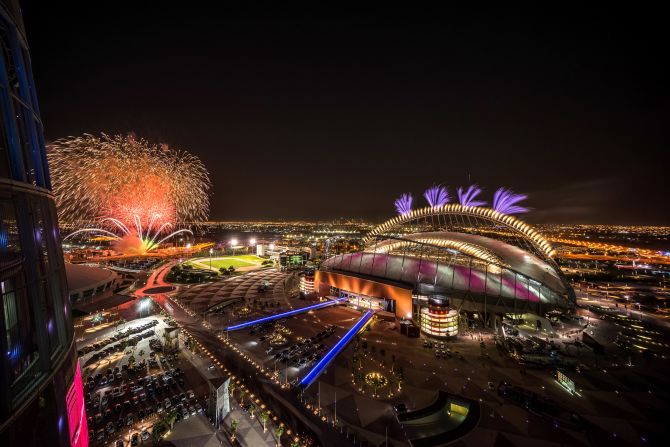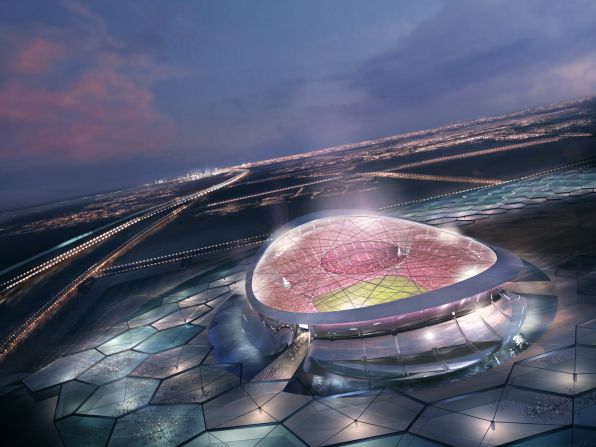
Khalifa International Stadium —
The Khalifa International Stadium was the first of the Qatar 2022 World Cup venues to be completed.

Khalifa International Stadium —
It officially opened on May 19, 2017, and can hold 48,000 fans after being expanded for the World Cup.

Khalifa International Stadium —
Initially opened in 1976, the stadium is situated close to Doha's impressive Aspire Zone and has undergone two reconstructions, first in 2005 and then in 2017.

Al Wakrah Stadium —
An artist's rendering of the Al Wakrah stadium in Qatar.

Al Wakrah Stadium —
Situated a short distance outside Doha, the Al-Wakrah Stadium was designed by Zaha Hadid Architects and will have a capacity of 40,000. It will also host games up until the World Cup quarterfinals.

Qatar Foundation Stadium —
The Qatar Foundation Stadium in Doha's Education City will have an initial capacity of 40,000.

Qatar Foundation Stadium —
But that will be reduced to 20,000 after the tournament, with half the seats removed and donated to build stadiums in developing countries.

Al Bayt Stadium —
The Al Bayt Stadium will be built in the city of Al Khor to the north of Doha and have a capacity of 60,000.

Al Bayt Stadium —
An artist's impression of the exterior of the Al Bayt Stadium.

Al Bayt Stadium —
The stadium design, which depicts a giant tent structure, honors Qatar's past and present, according to Qatar's Supreme Committee for Delivery and Legacy.

Al Thumama Stadium —
The 40,000-seat Al Thumama Stadium will host matches up to the quarterfinals of the 2022 World Cup. The venue's design represents the gahfiya, a traditional woven cap worn by males across the Arab world.

Al Rayyan Stadium —
The Al Rayyan Stadium will be built on the site of the existing Ahmed Bin Ali Stadium in Al Rayyan just outside Doha.
Al Rayyan Stadium —
An artists' impression of the Al Rayyan Stadium which will host matches up until the quarterfinal stage of the tournament.

The Lusail Iconic Stadium just outside Doha is slated to host the opening and closing matches of the 2022 World Cup. It's also at the center of the Lusail City project which will eventually be home to more than 200,000 people, according to Qatar's Supreme Committee for Delivery and Legacy.

